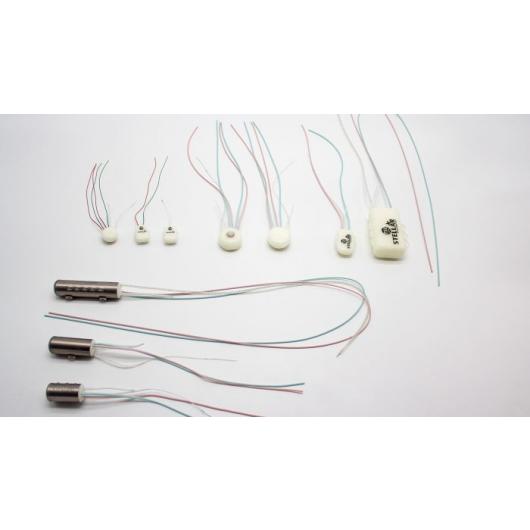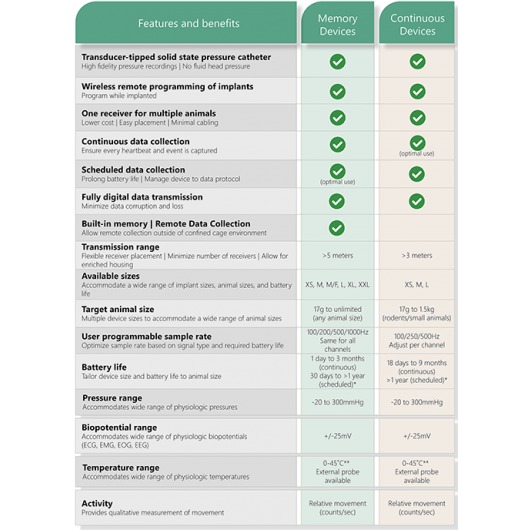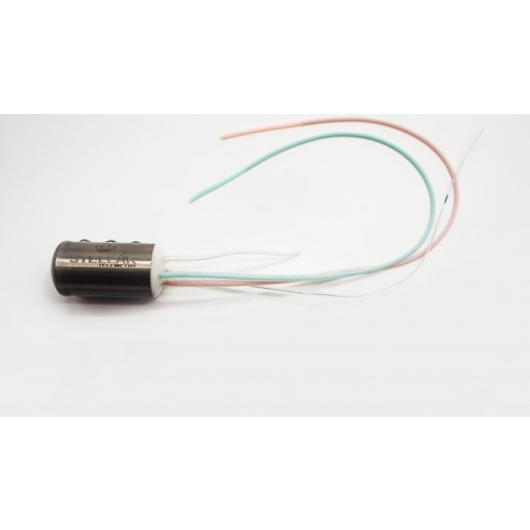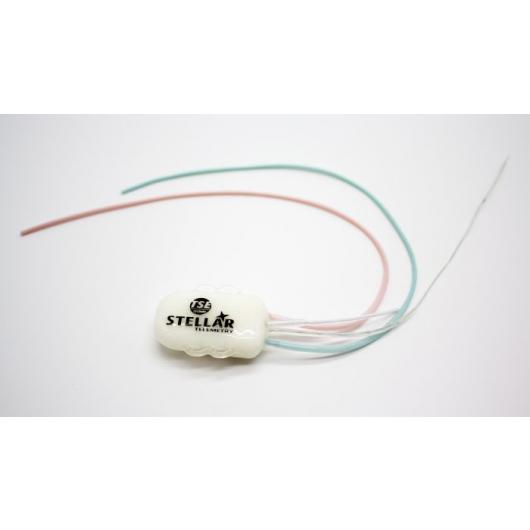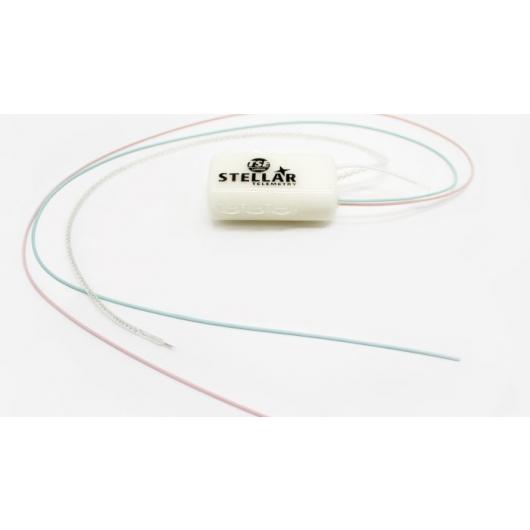







Stellar telemetry
Features
- Group housing and long transmission range accommodate most monitoring environments
- Transducer-tipped solid state pressure catheter for high fidelity pressure measurements
- Remote programming and control of implants
- Minimal system hardware and associated costs
- Flexible options for implant size and channel combinations
Application
- Cardiovascular
- Physiology
- EEG/Sleep/Seizure
- Metabolism
- Behavior
Disease models
- Cardiovascular diseases
- Sleep disorders
- Epilepsy/seizures
- Cognitive disorders
- Metabolic syndrome
- Diabetes
- Ocular disorders
- Renal disorders
Stellar Telemetry represents the latest technology advancements in implantable physiologic monitoring. The system allows monitoring of many animals with just one receiver and facilitates group housing and social interaction. Stellar implants can be used in animal models ranging from mice to dogs and larger animals and in a wide range of research studies including phenotyping, pharmacology, behavior, metabolic, and general physiology assessment.
Stellar implants are available in two device types – memory-type implants and continuous-type implants. Both device types offer up to four physiologic channels plus temperature and accelerometer-based activity. Memory-type implants offer the unique ability to remotely record data away from the home cage without data loss thanks to implant programming and data storage. Data are transmitted whenever the implant is within range of the receiver (within approximately 5 meters). Continuous-type devices are optimized for power efficiency and can transmit continuous data for weeks to months, depending on device size, channel configuration, and user-programmed sample rate. Both device types support continuous or programmed scheduled sampling to optimize useful battery life.
The unique capabilities of Stellar implants have enabled novel research applications such as monitoring of blood pressure and ECG for sheep in free-roaming outdoor pens and monitoring of ECG/heart rate for wild seagulls over the course of several months.
The following table summarizes the features and benefits of the Stellar devices.
|
Features and benefits |
Memory devices |
Continuous devices |
|
Transducer tipped solid state pressure catheter. |
yes |
yes |
|
Wireless remote programming of implants. Program while implanted.
|
yes |
yes |
|
One recevier for multiple animals. Lower cost, easey placement, minimal cabling.
|
yes |
yes |
|
Continuous data collection. Ensure every heartbeat and event is captured.
|
yes |
optimal use |
|
Scheduled data collection. Prolong battery life. Manage device to data protocol.
|
optimal use |
|
|
Fully digital data transmission. Minimize data corruption and loss.
|
yes |
|
|
Built-in memory. Remote data collection. Allow remote collection outside of confined cage environment.
|
> 5 meters |
> 3 meters |
|
Transmission range. Flexible receiver placement. Minimize number of receivers. Allow for enriched housing.
|
Ø 5 meters |
Ø 3 meters |
|
Available sizes.
|
XS, M, M/L, L, XL, XXL |
XS, M, L |
|
Target animal size.
|
17 g to unlimited (any animal size) |
17 g to 1,5 kg (rodents / small animals) |
|
User programmable sample rate. Optimize sample rate based on signal type and required battery life.
|
100/200/500/1000 Hz (Same for all channels) |
100/250/500 Hz (Adjust per channel) |
|
Battery life. Tailor device size and battery life to animal size.
|
1 day to 3 months (continuous). 30 dats to >1 year (scheduled)* |
18 days to 9 months (continuous), >1 year (scheduled)* |
|
Pressure range. Accommodates wide range of physiologic pressures.
|
From 20 to 300 mmHg |
From 20 to 300 mmHg |
|
Biopotential range. Accommodates wide range of physiologic biopotemtials (ECG, EMG, EEG, EOG).
|
+/- 25mV |
+/- 25mV |
|
Temperature range. Acoommodates wide range of physiologic temperatures.
|
0-45℃ (external probe available) |
0-45℃ (external probe available) |
|
Activity. Provides qualitative measurement of movement. |
Relative movement (count/sec.) |
Relative movement (count/sec.) |
*Scheduled battery life based on 10-second sample every 10 minutes. Varies based on device size, number of channels, sample rate, and data collection protocol.
Jasien JV, Samuels BC, Johnston JM, Downs JC. Diurnal Cycle of Translaminar Pressure in Nonhuman Primates Quantified With Continuous Wireless Telemetry. Inves Ophthalmol Vis Sci. 2020 Feb 7;61(2):37.
Jasien JV, Fazio MA, Samuels BC, Johnston JM, Downs JC. Quantification of Translaminar Pressure Gradient (TLPG) With Continuous Wireless Telemetry in Nonhuman Primates (NHPs)
Wilson KI, Godara P, Jasien JV, Zohner E, Morris JS, Girkin CA, Samuels BC, Downs JC. Intra-Subject Variability and Diurnal Cycle of Ocular Perfusion Pressure as Characterized by Continuous Telemetry in Nonhuman Primates. Invest Ophthalmol Vis Sci. 2020 Jun 3;61(6):7.
Jasien JV, Zohner YE, Asif SK, Rhodes LA, Samuels BC, Girkin CA, Morris JS, Downs JC. Comparison of extraocular and intraocular pressure transducers for measurement of transient intraocular pressure fluctuations using continuous wireless telemetry. Sci Rep. 2020 Dec 1;10(1):20893.
Jasien JV, Samuels BC, Johnston JM, Downs JC. Effect of Body Position on Intraocular Pressure (IOP), Intracranial Pressure (ICP), and Translaminar Pressure (TLP) Via Continuous Wireless Telemetry in Nonhuman Primates (NHPs). Invest Ophthalmol Vis Sci. 2020 Oct 1;61(12):18.


